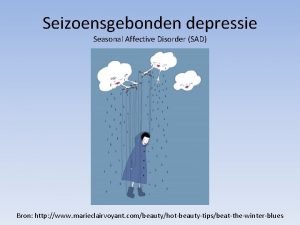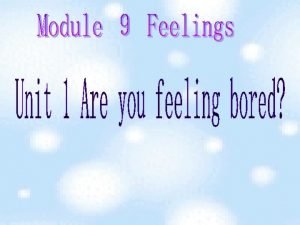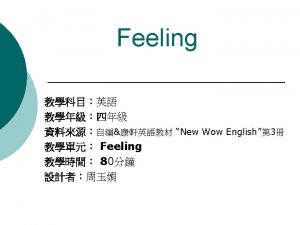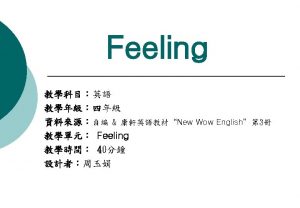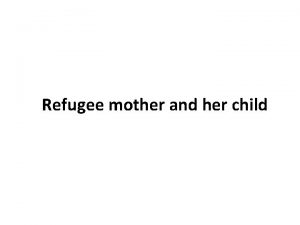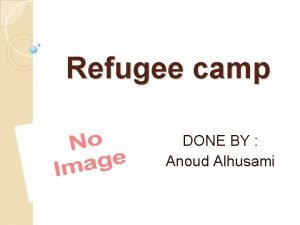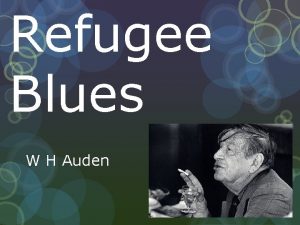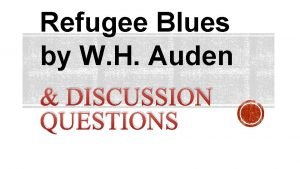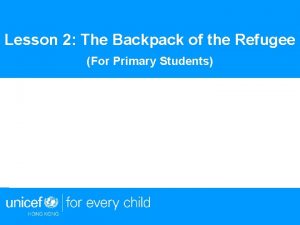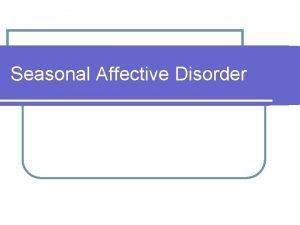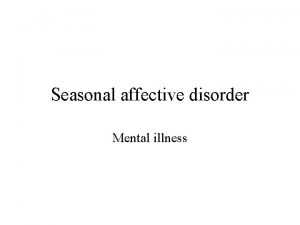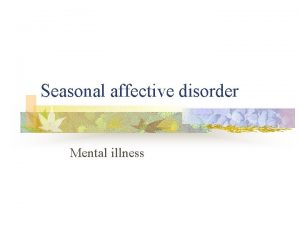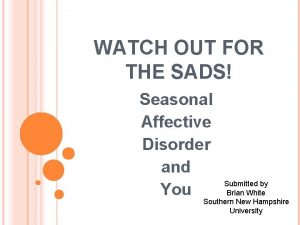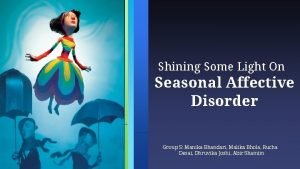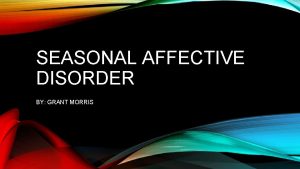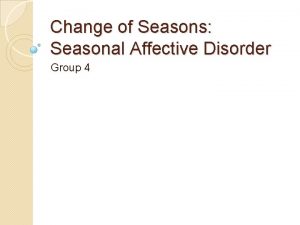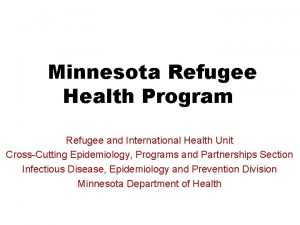Seasonal Affective Disorder SAD Refugee Health Programs When













- Slides: 13

Seasonal Affective Disorder (SAD) Refugee Health Programs

When Winter Comes • The arrival of winter is often accompanied by a desire to sleep more, eat more, stay inside longer, and be less active. • Such behaviors are normal.

Seasonal Affective Disorder • Some people experience depression when the seasons change, most often from fall to winter. • This is known as Seasonal Affective Disorder (SAD). • Such depression is not normal, and can be treated and even prevented.

Why SAD? • During the fall and winter time, there is less sunlight than the spring and summer. • Cold and dark weather can put anybody in a bad mood, but it can make some people sadder. • If bad feelings start to affect your daily life during certain seasons, you may have SAD.

Common Symptoms of SAD • • • Change in appetite or food cravings Weight gain Decrease in energy Sleepiness Loss of interest in activities that were once enjoyable • Feeling more irritable or angry • Feeling less social

Possible Causes of SAD • Anybody can get Seasonal Affective Disorder. There is no known cause. • The decrease in the amount of sunlight may cause depression. • The decrease in the amount of sunlight can lead to changes in one’s Circadian rhythm (your body’s clock). • Such changes can affect when and how you sleep, which can lead to depression. .

Do You Have SAD? • You might have SAD if: – You have symptoms of depression at the same time of year for at least the past two years – You experience a time when you are sad followed by a time of not being sad – There is no other reason for your mood changes.

When to Seek Help • If you think you have SAD or depression, seek help from a mental health professional (doctor, therapist, social worker) • See your doctor if your depression gets worse or if you have thoughts about killing yourself.

Prevention Simple Ways to Beat the Blues – Do things that make you feel good, like getting a haircut – Get exercise – Take short 5 minute naps (“cat naps”) – Try to do outside activities – Spend time with loved ones – Develop a sleep routine – Eat healthy

Treatment • Light Therapy– a special light that simulates daylight (ask your provider where you can get one) • Talk Therapy (psychotherapy) can help you feel better and learn how to prevent or minimize depression. • Medication (antidepressants) can be prescribed by a doctor.

Mood-Enhancing Foods • Fish (tuna, sardines, mackerel, herring) • Nuts & Seeds (walnuts, brazil, macadamia, pistachio, pumpkin, flax and sunflower seeds) • Dark Chocolate (in moderation) • Fruit • Lots of water!

Coping & Support • • Follow your treatment plan. Make your home sunny; open the shades! Learn how to manage stress Socialize with people you enjoy being around.

Questions? Refugee Health Programs Heartland Health Outreach 1331 W Albion Chicago, IL 60626 773. 751. 4166 ph This multi-media document was made possible by funding from the Office of Refugee Resettlement, Department of Health and Human Services provided to the Illinois Department of Public Health. Prepared by Jamie Korey. March 2009
 Symptomen van seasonal affective disorder
Symptomen van seasonal affective disorder Angry i guess
Angry i guess Sad smiley
Sad smiley Happy sad hungry thirsty hot cold
Happy sad hungry thirsty hot cold All national programme list
All national programme list Dsm 5 munchausen by proxy
Dsm 5 munchausen by proxy Collection of programs written to service other programs.
Collection of programs written to service other programs. Refugee blues poem summary
Refugee blues poem summary Refugee mother and child structure
Refugee mother and child structure Define refugee camp
Define refugee camp Blues stanza
Blues stanza Refugee blues
Refugee blues Refugee backpack activity
Refugee backpack activity Refugee backpack activity
Refugee backpack activity
